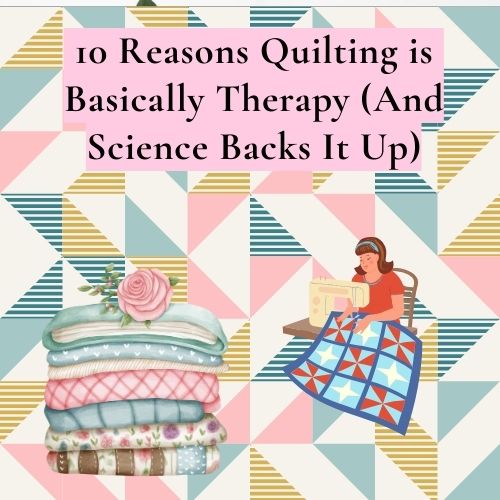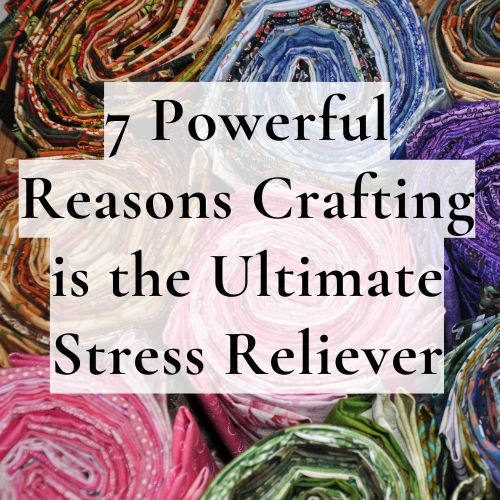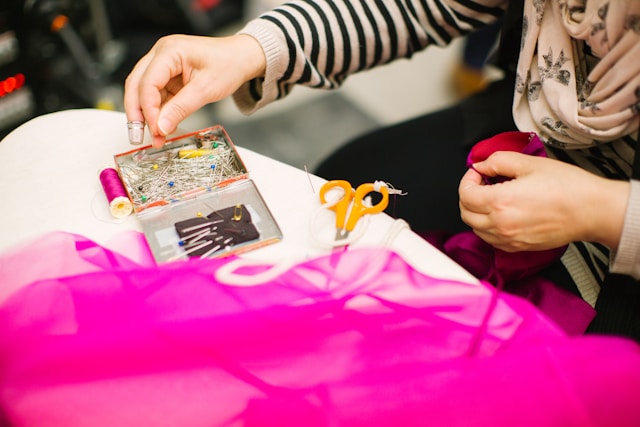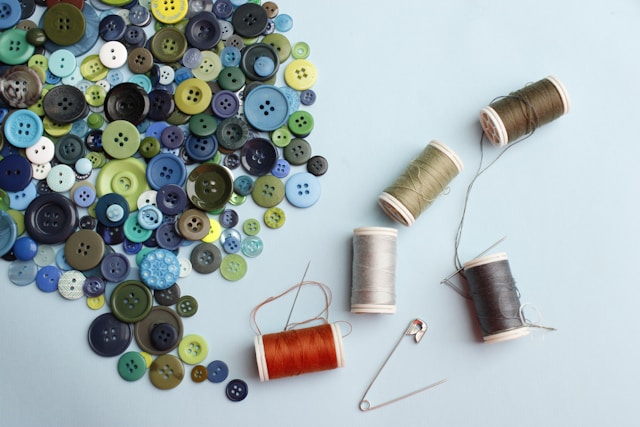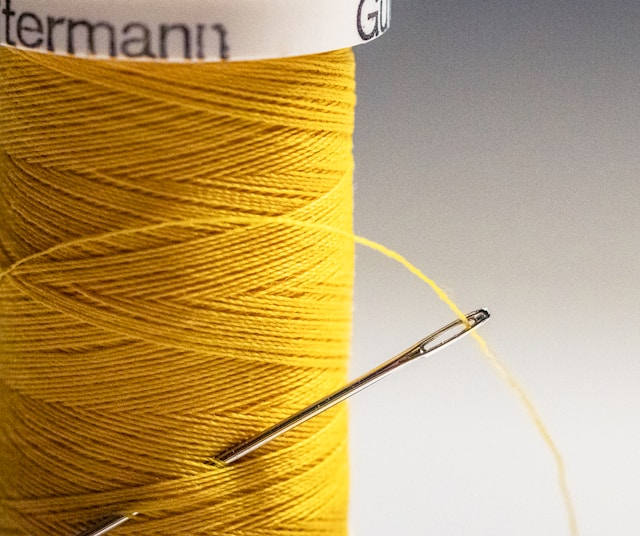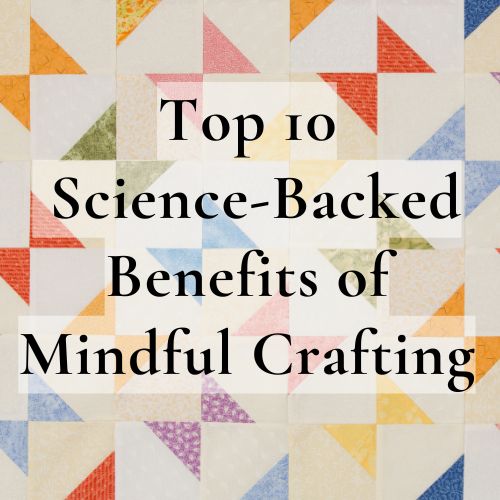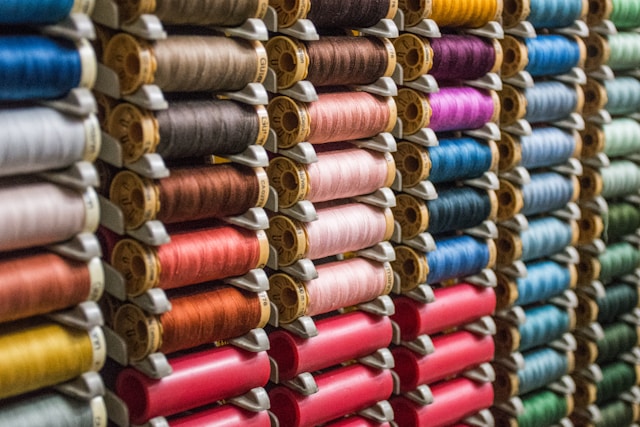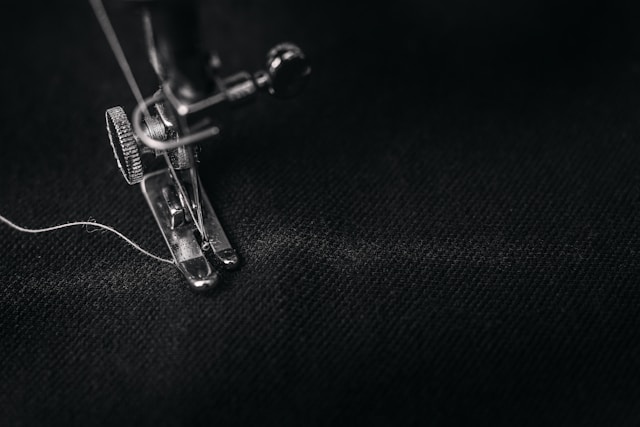Let’s be real—quilting is more than just stitching fabric together. It’s a full-body, brain-engaging, emotion-soothing, creativity-boosting experience that has been helping people heal for centuries. Sure, it’s beautiful, functional, and artistic, but did you know that quilting also has legit mental health benefits?
From stress reduction to brain training, quilting does wonders for the mind, body, and soul. So if anyone ever tries to tell you that quilting is “just a hobby,” hit them with this science-backed list of why quilting is basically therapy with fabric.
1. Quilting Lowers Stress Like a Meditation Practice
Ever felt your breathing slow down as you settle into a quilt project? That’s because quilting engages the parasympathetic nervous system, which is responsible for relaxation and stress recovery.
- The repetitive, rhythmic motion of cutting, piecing, and stitching calms the nervous system—much like deep breathing or yoga.
- Studies show that engaging in crafts like quilting reduces cortisol (the stress hormone) and promotes a sense of well-being.
- The physicality of quilting—using your hands, pressing fabric, guiding stitches—keeps your mind grounded in the moment, preventing anxious overthinking.
Basically, quilting is meditation for people who like to stay busy.
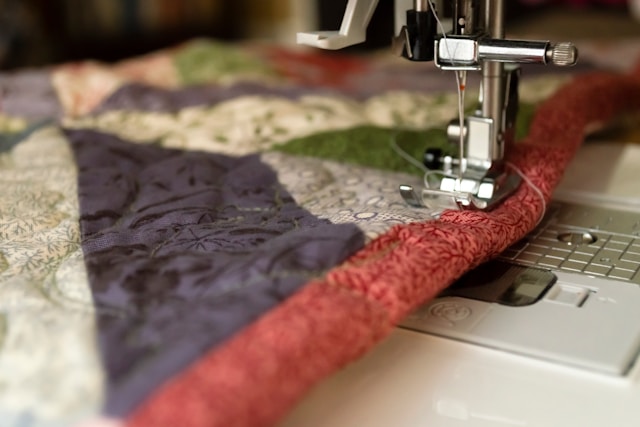
2. Choosing Fabric and Colors Engages Your Emotional Brain
Ever notice how you feel something when picking fabric? That’s because color and texture directly engage the limbic system—the part of the brain that processes emotions.
- Warm colors (reds, oranges, yellows) can boost energy and creativity.
- Cool colors (blues, greens, purples) promote relaxation and emotional balance.
- Soft, worn fabrics can bring a sense of comfort and nostalgia.
Your fabric choices aren’t just aesthetic—they’re emotional storytelling. Whether you realize it or not, quilting helps you express feelings in a safe, tactile way.
3. Quilting Boosts Focus and Memory (Seriously, It’s Brain Training!)
Quilting isn’t just relaxing—it’s mentally challenging in the best way. The planning, problem-solving, and precision required activate multiple areas of the brain and help keep cognitive function sharp.
- Following a quilt pattern strengthens executive function (the part of the brain responsible for planning and decision-making).
- Measuring and cutting fabric engages spatial awareness and mathematical reasoning.
- Hand-eye coordination while stitching improves motor skills and brain connectivity.
This explains why quilting has been linked to lower dementia risk and better cognitive resilience—it’s a full-brain workout!
4. Quilting Provides a Safe Space to Process Emotions
Some emotions are too big for words. That’s where quilting comes in.
- Working with your hands creates a calming, meditative rhythm that allows you to sit with difficult feelings without being overwhelmed.
- The process of piecing together fabric mirrors emotional healing—bringing separate pieces together into something whole.
- Many quilters create memory quilts using fabrics from loved ones, turning grief into something tangible and healing.
It’s no wonder quilting has been used throughout history as a way to cope with loss, change, and personal transformation.
5. The Act of Stitching Is Literally Self-Regulation
Ever caught yourself stitching when you were feeling restless? That’s because the repetitive motion of quilting regulates the nervous system.
- Slow, deliberate hand stitching mimics grounding techniques used in therapy to reduce anxiety.
- Free-motion quilting or hand quilting can create a flow state—a deeply focused, calming mental space similar to mindfulness meditation.
- Pressing fabric, smoothing seams, and cutting with precision engages fine motor skills, which are directly connected to stress regulation in the brain.
If you’ve ever used quilting as an escape during tough times, you weren’t just distracting yourself—you were actively helping your nervous system reset.
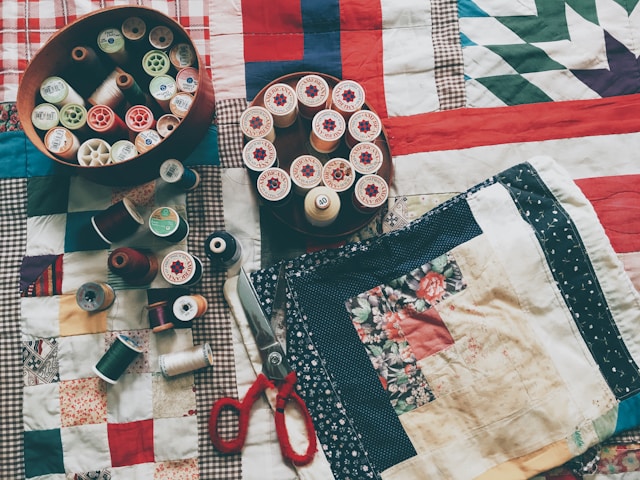
6. Quilting Creates a Sense of Control in an Unpredictable World
Let’s face it—life can be chaotic. Quilting, on the other hand, follows clear steps and predictable patterns.
- You choose your fabric, your design, your color palette—giving you full creative control.
- The step-by-step process of cutting, piecing, and stitching offers structure and predictability, which is grounding in times of stress.
- If something goes wrong? You can always unpick a stitch and try again—a reassuring reminder that mistakes are fixable.
In a world where so much feels out of control, quilting is a tangible way to reclaim agency over your time and energy.
7. Quilting Strengthens Social Connection (And Humans Need That!)
Crafting has always been a community-driven activity, and quilting is no exception.
- Quilting circles and guilds provide a space for friendship, shared learning, and emotional support.
- Gifted quilts carry deep personal meaning, strengthening bonds between the maker and the recipient.
- Collaborative quilt projects—like community quilting initiatives or charity quilts—bring people together for a greater purpose.
Social connection is essential for mental well-being, and quilting creates built-in opportunities to foster relationships and share creativity.
8. Quilting Reduces Screen Time and Digital Fatigue
In a world where screens dominate our time, quilting forces you to unplug and be fully present.
- Instead of endless scrolling, quilting engages your hands and mind in something real and tactile.
- The slow, methodical nature of quilting counteracts the overstimulation of digital life.
- Unlike screens, which disrupt sleep, quilting before bed actually helps you wind down.
If you’re looking for a way to break free from constant digital overload, quilting is the perfect off-screen escape.
9. Your Brain Loves the Sense of Completion Quilting Brings
There’s a reason finishing a quilt feels SO satisfying—it’s neuroscience! Completing a project releases dopamine, the brain’s reward chemical, reinforcing feelings of accomplishment, motivation, and joy.
Even small quilting milestones—like finishing a quilt block or binding a corner—trigger a sense of achievement that boosts confidence and mental well-being.
10. Quilting Keeps Your Hands Busy and Your Mind Clear
Ever noticed how working on a quilt stops your brain from spiraling into overthinking mode? That’s because quilting requires just enough focus to keep you engaged, without being mentally exhausting.
This balance between engagement and relaxation makes quilting an ideal way to:
✔ Reduce racing thoughts
✔ Manage anxiety
✔ Cultivate presence and mindfulness
Basically, quilting is the ultimate brain-and-body sync-up, giving you mental clarity, creative fulfillment, and stress relief all in one.
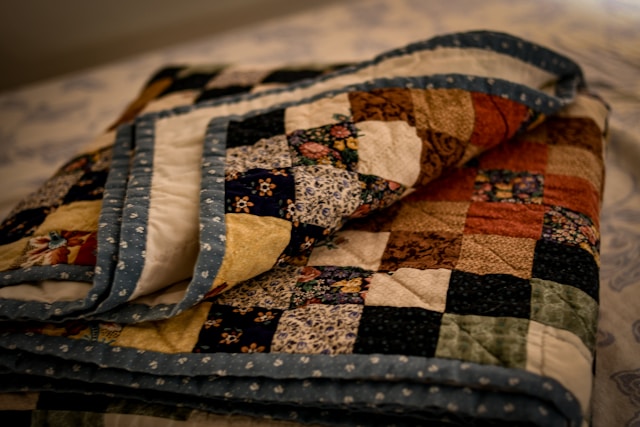
Mindful Quilting Exercise: The Intention Square
Want to experience the therapeutic power of quilting firsthand? Try this simple Intention Square Exercise:
- Choose a single fabric square to represent something meaningful—a feeling, a memory, a goal.
- Before stitching, take a deep breath and set an intention for this piece (peace, healing, creativity, love).
- Stitch slowly, with presence, focusing on each movement as if weaving your intention into the fabric.
- Add this square to a larger quilt, knowing that every stitch holds meaning.
This is a simple way to turn quilting into a mindful, intentional practice—one stitch at a time.
Next Steps: Using Quilting as a Healing Practice
✔ Make quilting a mindful ritual. Set aside time to quilt slowly, intentionally, and without pressure.
✔ Use your quilts to tell a story. Whether through fabric choices or stitched messages, let your work be meaningful.
✔ Find a quilting community. Connection deepens the joy of quilting—whether online or in person.
If you want to explore how quilting can support emotional healing, mindfulness, and creativity, the Craft to Heal workshop series is the perfect place to start.
Explore this in more depth by joining my Craft to Heal workshop.
